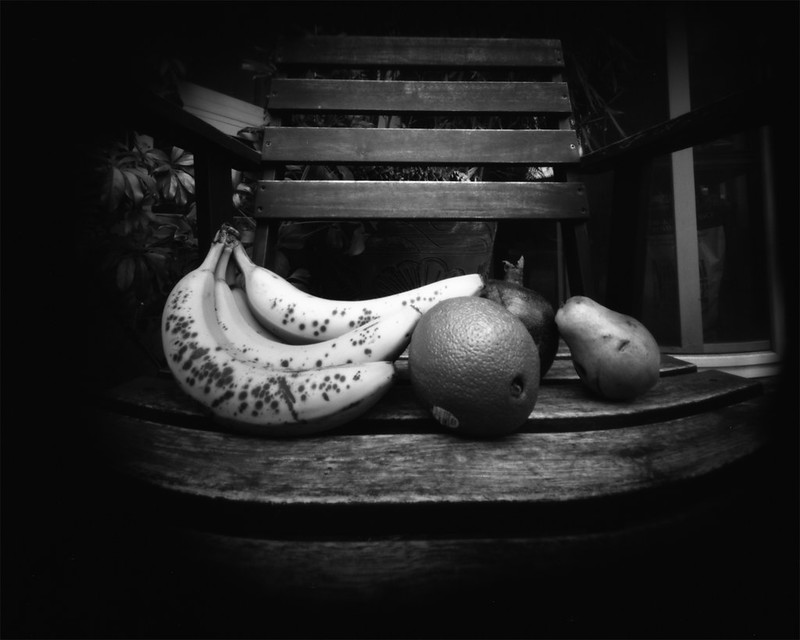If you were fortunate enough to read my scintillating previous post about the pinhole camera, you probably finished it scratching your head, thinking... "Why would he
shorten the focal length to get more coverage on his film?" The truth is that I was doing the same thing. It didn't make sense intuitively. If the pinhole is closer to the film, that should just make the image smaller. How would that effect the area of coverage? The answer is this... it actually doesn't make the image smaller, but it does change the magnification. It is the same effect of changing from a 50mm lens on your 35mm SLR to a 28mm lens. Things get smaller but the image stays the same size (36x24mm). This is done through the magic of optics. The glass lens elements manipulate the light path so that you can change focal length and aperture and not change the size of the projected image circle. I don't have any glass lens elements on this camera though. So changing from 115mm focal length to 81mm focal length has the effect of reducing the magnification of the scene, and if the image circle of the pinhole is big enough to cover the size of film you are using, all is copacetic. However, in my case I
also changed the size of the pinhole from 0.5mm to 0.4mm, a gigantic 20% decrease! Guess what. When you reduce the size of the pinhole, you reduce the size of your image circle! So now I have an 8x10 pinhole that has an image circle big enough to cover a 4x5 piece of film. Seriously, I kept thinking to myself, "you shouldn't cut that camera down... just make another back for it." and now that is what I will be doing. I will need to calculate the right distance to cover my curved 8x10 (~126°).
For your viewing pleasure, here is a crappy still life I took after cutting down the camera. Back to the drawing board.



No comments:
Post a Comment